Protecting the Cloud in a Hybrid Work World
- Siriluk Sithsakonkul
- May 27
- 4 min read

Hybrid work is here to stay. Organizations worldwide are rapidly adopting remote work models, and with them comes an inevitable rise in cloud-based services. While this shift enables flexibility and innovation, it has also transformed IT environments and introduced unique security challenges. To thrive in this new era, businesses must prioritize a proactive approach to cloud security.
This blog explores the unique challenges posed by hybrid work and cloud adoption, emerging threats in cloud environments, and actionable strategies to safeguard your organization's critical assets. Read on to discover how you can stay ahead in securing your digital workspace.
The Rise of Hybrid Work and Cloud Adoption
The rapid transition to hybrid work is shaping the future of business operations. A report revealed that 94% of organizations have adopted some form of hybrid work structure, fundamentally transforming workplaces and IT ecosystems. Simultaneously, the use of cloud-based services has skyrocketed, with businesses relying on platforms like SaaS (Software-as-a-Service) to support remote teams and meet customer demands.
Cloud technology has been instrumental in enabling businesses to adapt, grow, and overcome challenges such as supply chain disruptions and evolving customer preferences. However, the speed at which organizations have embraced the cloud often outpaces security measures, leaving gaps that malicious actors are eager to exploit.
The Unique Security Challenges of the Cloud
Cloud environments are inherently different from on-premises infrastructures. These differences create new security complexities that demand tailored solutions for protection. Below are some of the most critical challenges businesses face:
1. Inadequate Cloud Security Protocols
Many organizations lack robust security protocols for the cloud. Weak practices such as unpatched vulnerabilities, outdated software, and blind spots in network monitoring leave endpoints susceptible to attacks.
2. Slow Threat Response
Attackers often conduct reconnaissance to pinpoint weaknesses in an organization’s defenses. Swift responses are crucial to mitigating damage, yet slow remediation leaves businesses highly vulnerable.
3. Cloud Misconfigurations
Improper configurations in cloud infrastructure allow cybercriminals to hijack sensitive data. Missteps often arise from insufficient knowledge of cloud security policies, leading to exploitable vulnerabilities.
These unique challenges necessitate strategies that go beyond traditional on-premises defenses and adopt a cloud-first perspective.
Emerging Threats Targeting Cloud Environments
The evolving threat landscape underscores the need for robust cloud security. Malicious actors are continually developing sophisticated attack methods that target cloud environments. Here are some notable threats:
Ransomware as a Service (RaaS)
RaaS platforms enable even novice attackers to launch devastating ransomware attacks. These attacks typically encrypt a company’s data, rendering it inaccessible until a hefty ransom is paid.
Advanced Malware
Malware has become more elusive than ever, using advanced techniques to evade detection. The rise of fileless malware and living-off-the-land (LotL) attacks means adversaries can exploit legitimate tools and processes within an organization.
Supply Chain Attacks
Attackers infiltrate supplier systems to access downstream targets, undermining trust in third-party vendors. With cloud services heavily reliant on integrations, these attacks pose a significant risk.
Insider Threats
The human element continues to be a weak link in cybersecurity. Insider threats, whether intentional or accidental, can jeopardize cloud security by exposing sensitive information or creating points of entry for attackers.
Key Strategies for Protecting the Cloud
To address these challenges and mitigate risks, organizations must implement robust cloud security strategies. Here are the key approaches to safeguarding cloud environments:
Behavior- and Kernel-Based Next-Generation Antivirus (NGAV)
Traditional antivirus solutions rely on known malware signatures, which are ineffective against novel threats. NGAV, on the other hand, leverages behavior-based and kernel-level monitoring to detect and block malicious activity in real time. This advanced capability not only prevents malware execution but also halts its lateral movement across networks.
Real-Time Threat Intelligence Feeds
Integrating real-time threat intelligence feeds into your security stack ensures your defenses are always up-to-date. These feeds monitor global threat activity, providing actionable insights and enabling rapid response to emerging attack patterns.
Multi-Factor Authentication (MFA)
Implementing MFA significantly strengthens access control by requiring users to verify their identities through multiple factors. Combined with single sign-on (SSO) solutions, MFA enhances user convenience while improving security.
Cloud-Specific Endpoint Detection and Response (EDR)
A cloud-optimized EDR solution provides comprehensive endpoint visibility, detection, and remediation. With advanced capabilities like automated threat hunting, forensics analysis, and incident response, these tools ensure robust protection for cloud-connected endpoints.
Regular Cloud Security Audits
Periodic security audits allow organizations to proactively identify misconfigurations, vulnerabilities, and compliance gaps in their cloud infrastructure. Fixing these issues before attackers exploit them is essential for maintaining a secure environment.
Employee Training and Awareness
People remain a critical line of defense. Regularly training employees on cloud security best practices and raising awareness about phishing and social engineering tactics can significantly reduce insider threats.
Adopting a Proactive Security Posture Is Key
The hybrid work era demands a new approach to cloud security. Relying on reactive measures is no longer sufficient. Organizations must adopt a proactive security posture that emphasizes prevention, real-time detection, and swift remediation.
Implementing behavior-based NGAV, leveraging real-time threat intelligence, and conducting cloud security audits are just some steps toward safeguarding your critical assets. The future of work is hybrid, and that future rests on the ability to secure the cloud effectively.
Want to learn more about protecting your cloud environment? Download our comprehensive Cloud Security Guide today and make sure your organization stays ahead of evolving threats.






Comments